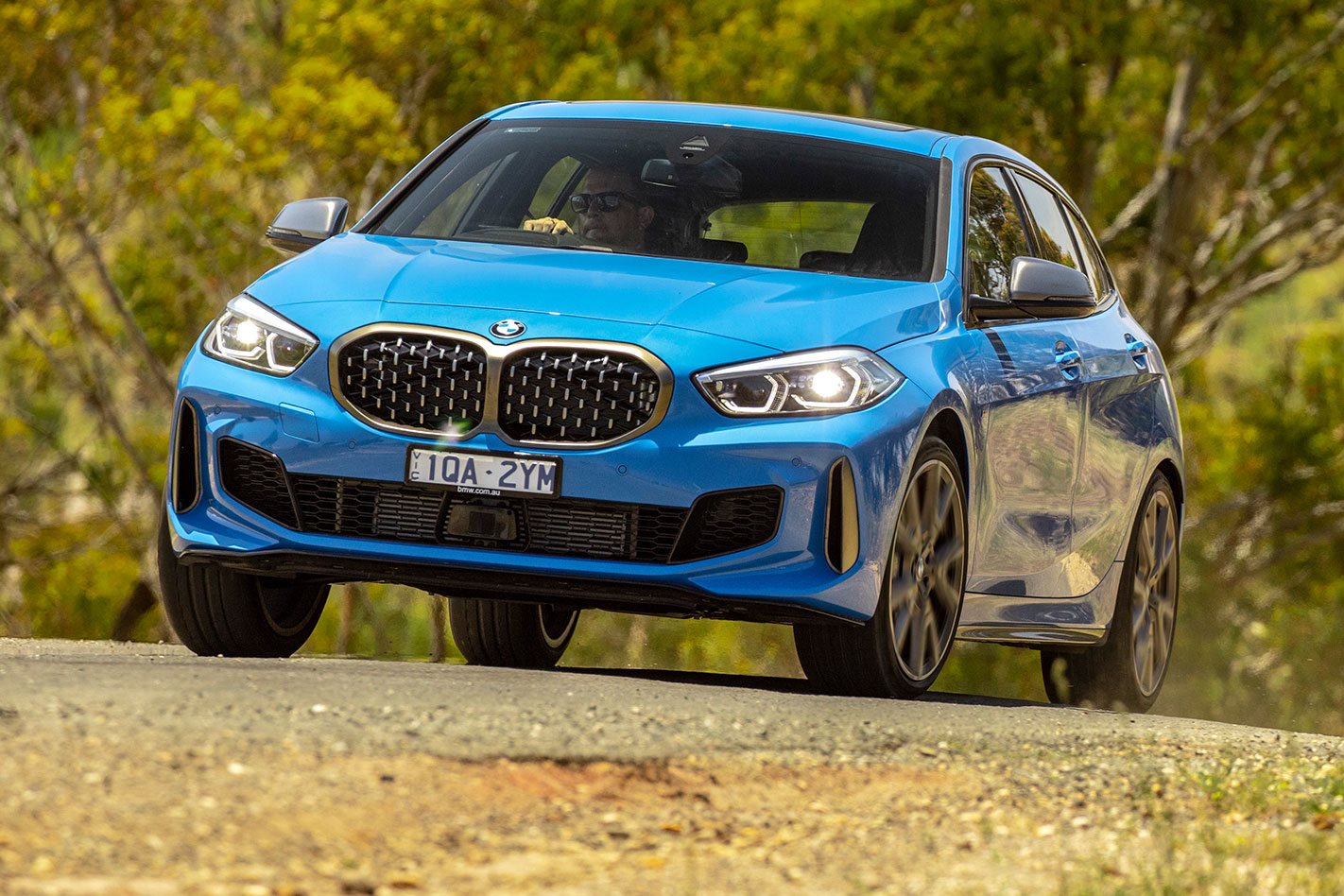Wheels review
Overall Rating

5 0 5
Plus & Minus
The Wheels Verdict: It was a long time coming, but we knew the changes had to be made, and now the M135i has dropped two cylinders and gained drive to the front wheels. Luckily, the news is nowhere near as melancholy as first thought. Ultimately you can wax lyrical about the new F40-generation M135i – it’s just not as easy to do so in comparison with its hard-to-forget predecessor.
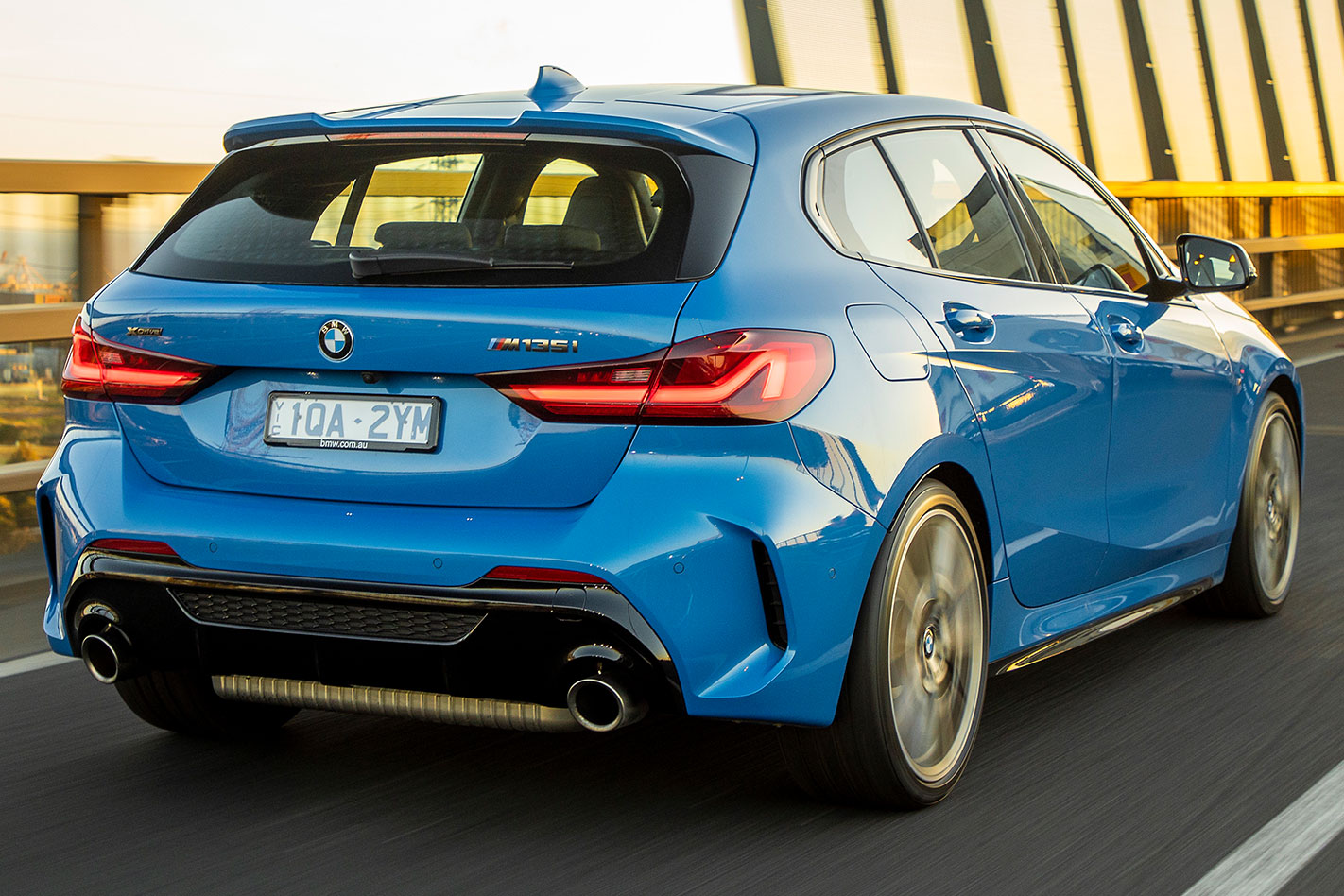
WHAT IS THE BMW M135i?
Like its competition, BMW’s hot hatch is now powered by a four-cylinder turbo engine and drives all four wheels. It sits on the UKL2 platform (shared with Mini), which has liberated interior space and added extra cargo capacity. Essentially, it’s the $63,990 Bimmer primed to take on the likes of the Mercedes-AMG A35, Audi S3 and Volkswagen Golf R.
WHY WE’RE TESTING IT
This is our first chance to sample the M135i on Aussie roads – which are vastly different to the smooth country roads and autobahns of the international launch route in Bavaria. It’s a bold move for BMW to step away from its rear-drive, inline-six roots, so we’re keen to see if it works down under.

Review
Niches are rife in the automotive landscape. They tend to generate specific cars that appeal to certain people – and those buyers usually become dedicated enthusiasts. The problem is niches generally don’t garner volume sales. And that’s an issue for the bean counters. Growing profit margins leaves little room for heartstrings and tradition.
Enter the third-generation F40 BMW 1 Series in its hottest guise, the M135i. The venerable B58 engine exits. Gone, too, is the playful rear-drive chassis. In its place is a boosted 2.0-litre powertrain – and with 225kW and 450Nm, it’s the most powerful BMW four-pot in its history – and a front-biased xDrive all-wheel-drive system. With a 0-100km/h time of 4.8 seconds, performance hasn’t suffered. And despite the AWD system, weight has actually dropped by 30kg to 1525kg.
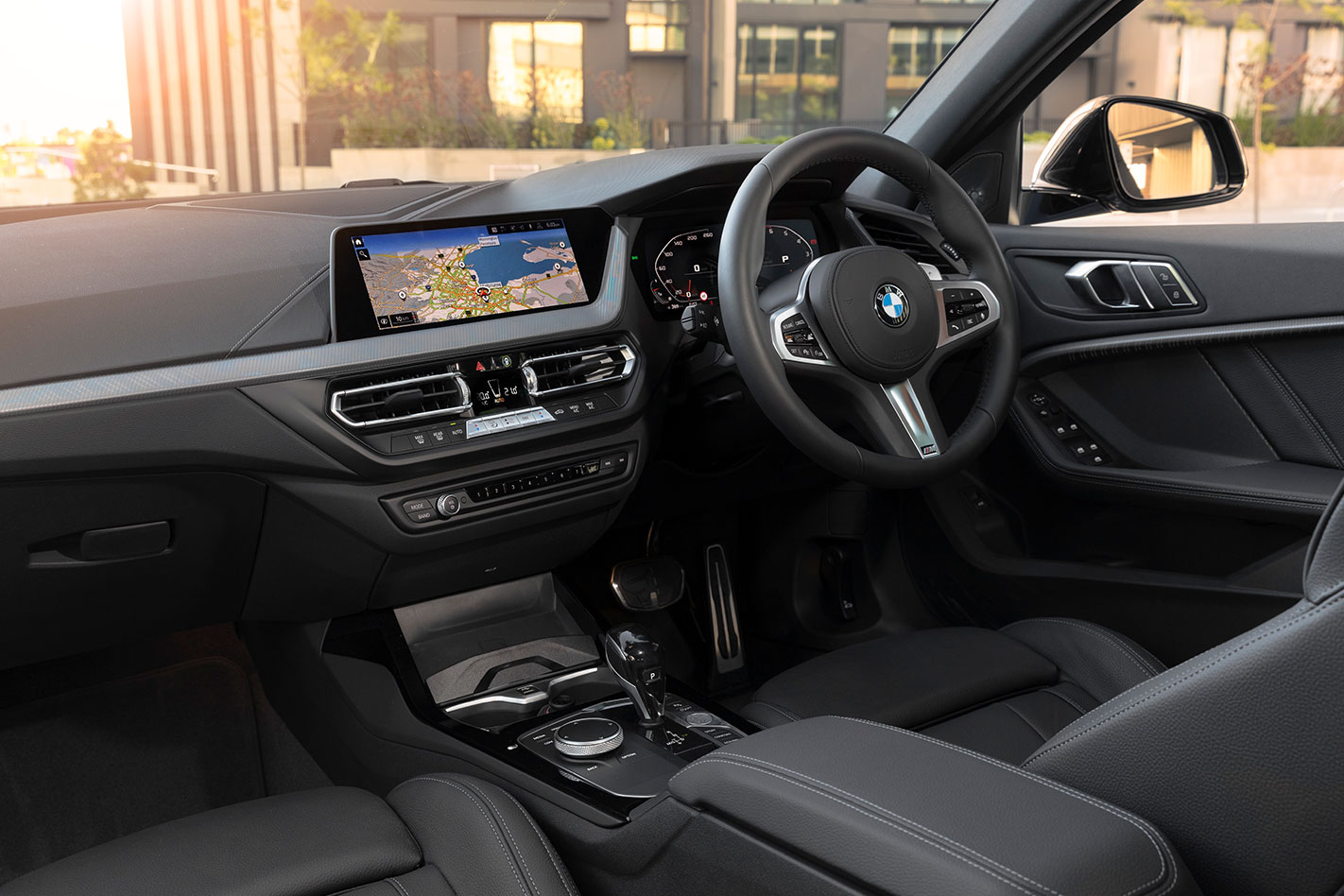
From the get-go, the change in personality is apparent. The power delivery is smooth, with the ultra-linear delivery resulting in deceptively fast progress. It’s not neck-snapping pace, but the M135i is swift point-to-point, while the four-cylinder has a distinctively Mini Cooper JCW soundtrack – just one with the volume turned down to seven. The eight-speed torque-converter automatic ties in well, too, and there are steering wheel-mounted paddles to play with to generate myriad pops and bangs.
With the new xDrive’s front-biased set-up you’ll have more chance of wiggling the rear under brakes on corner entry than you will during power down past the apex. A rather conservative maximum of 50 percent of drive can be sent rearwards at one time. A Torsen mechanical limited-slip differential helps translate grunt to grip, while a tricky anti-slip system works in conjunction with the DSC to keep understeer at bay. Branded ARB, it’s taken from the i3s and can detect wheel slip 10 times faster than the set-up it replaces.

If you want adaptive dampers, you can’t keep the standard 19-inch alloys due to an engineering requirement with the suspension –essentially, it won’t fit. Instead, you have to option the smaller 18-inchers and hand over and extra $400. This is interesting given that the bigger wheels, with fixed-rate suspension, result in a firm, not harsh, ride quality. Some softening, with a dedicated Comfort damper mode, could help.
Inside, the 1 Series has taken a massive step forward. The F40’s design and quality has increased demonstrably, so much so that it has mini-me 8 Series vibes. A 10.25-inch central takes care of the infotainment. Screen. A second 10.25-inch screen is used for the instrument cluster. Wireless Apple CarPlay (which is now no extra cost) and BMW Intelligent Personal Assistant are the highlights. The latter allows you to perform various tasks via voice activation; you just say “Hey, BMW” for it to work.
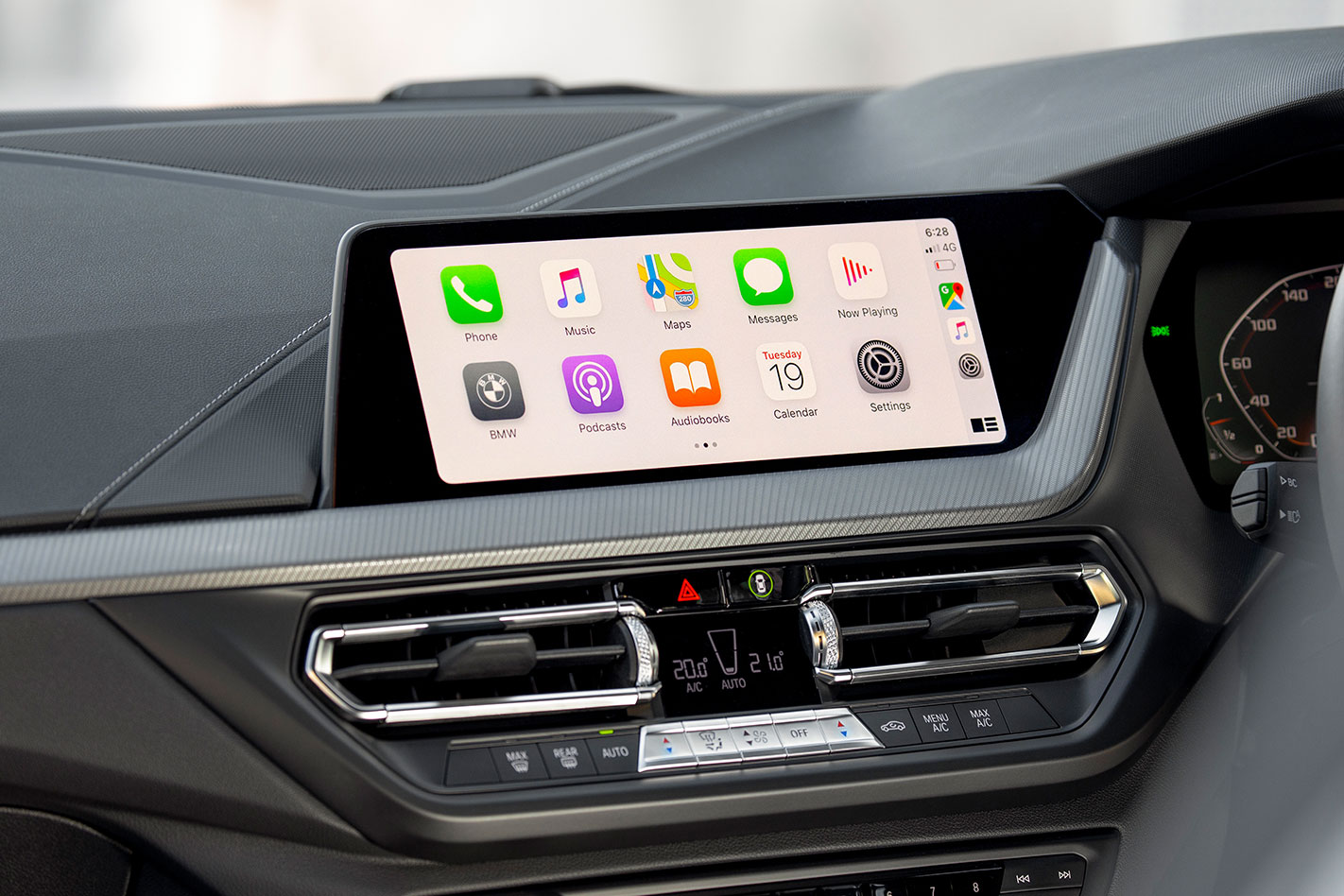
Not only does the 34mm wider (1799mm) and 13mm higher body (1344mm) offer more room for heads, shoulders, knees and toes – particularly in the rear – the boot space has increased by 20 litres to 380 litres. Overall length has actually shrunk by 5mm (4324mm).
The M135i is a very capable and competent hot hatch, it’s just not as exciting as the one it replaces. But niches don’t balance the books. And with a much broader breadth of attributes, the M135i’s mass appeal outweighs holding onto the past.
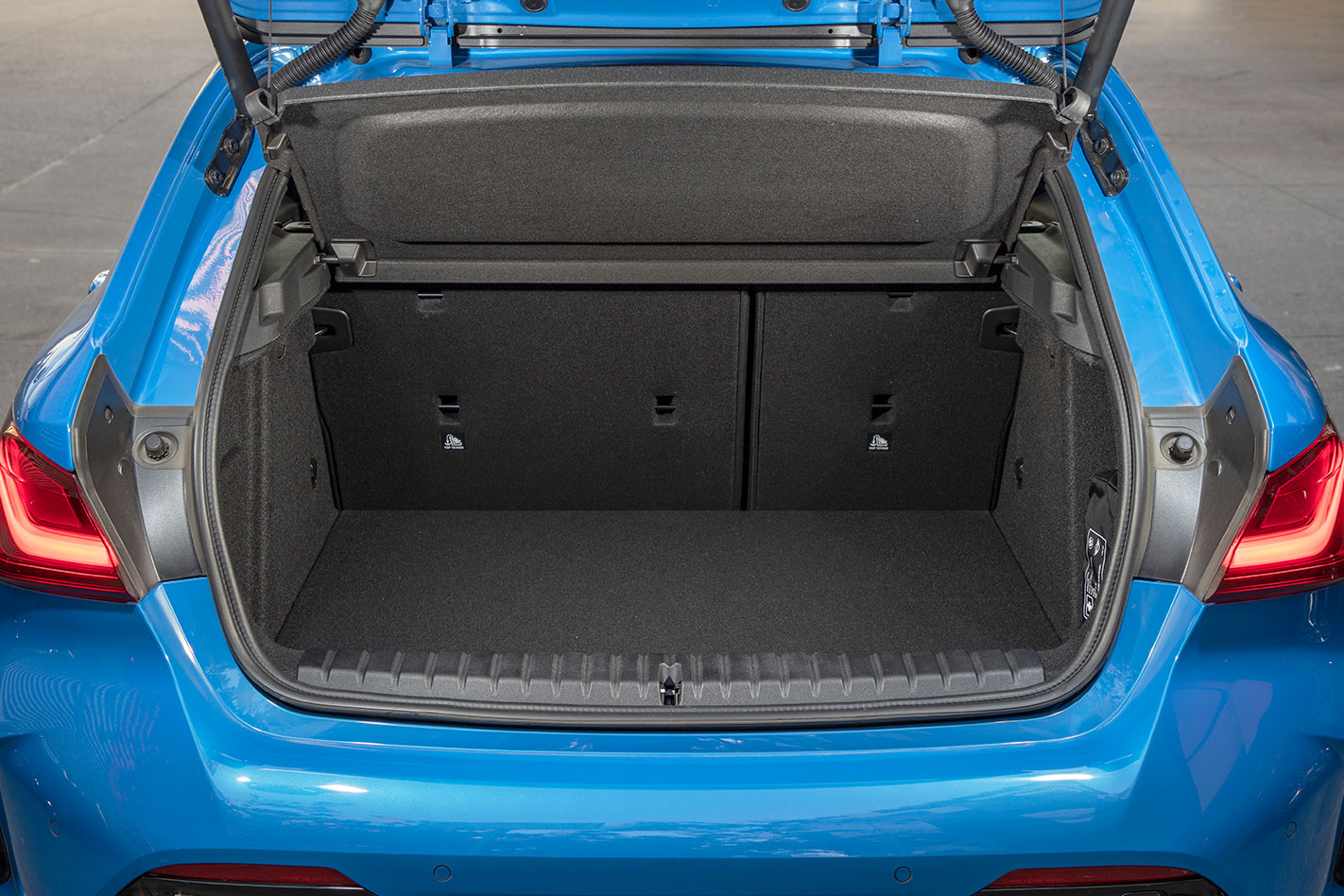
RIVALS
Mercedes-AMG A35, Audi S3, VW Golf R
BMW M135i SPECS
Model: BMW M135i
Engine: 1998cc 4cyl, dohc, 16v, turbo
Power: 225kW @ 4500-6250rpm
Torque: 450Nm @ 1750-5000rpm
Transmission: 8-speed automatic
Weight: 1525kg
0-100km/h: 4.8 seconds
Economy: 7.5L/100km
Price: $63,990
On sale: Now
Sign-up here to get the weekly Wheels highlights
Second opinion: MOTOR review

Motor focuses exclusively on high-performance cars, offering a heart-stopping, hair-raising blast into the world of prestige and performance culture.
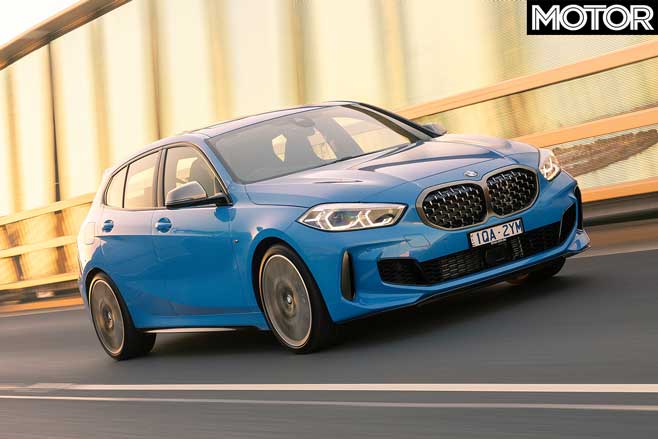
Munich’s new hottie misses the mark By:Scott Newman
It’s always tough to follow a successful act. Imagine the nerves Mark Nicholas had replacing Richie Benaud in cricket’s central commentary position, or how Sammy Hagar felt stepping into David Lee Roth’s shoes in Van Halen. The new BMW M135i faces a similar situation in having to replace the beloved M140i.
An all-time hot hatch great, it was always a MOTOR favourite, but it’s an apples and oranges comparison with the newcomer. The M140i was rear-wheel drive with a 3.0-litre turbocharged straight-six in the nose, whereas its successor is all-wheel drive and powered by a 2.0-litre turbocharged four-cylinder.
There’s a very good reason for this. The attributes that made the M140i such a great hot hatch compromised the basic versions that sold in much greater numbers. An engine bay large enough for a 3.0-litre six compromised cabin space, as did the need for a transmission tunnel running down the middle of the car, while the rear differential ate into boot space. The intent was to solve these issues by switching the boggo 1 Series to front-drive and smaller engines.
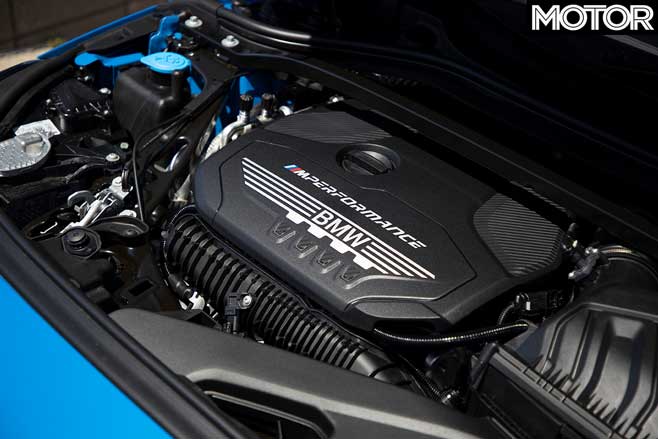
Strange, then, that the everyday benefits seem marginal. The extra shoulder room is mainly due to the new 1 Series being a wider car and headroom is identical in the front and less in the rear. Boot space has increased 20 litres to a Golf-matching 380 litres, though with the rear seats folded it’s an identical 1200L.
The interior lacks the outright flash of the Mercedes A-Class but will be comfortingly familiar to anyone currently driving a BMW, and it’s filled with toys: twin 10.25-inch digital screens, M Sport seats, head-up display, keyless entry and 16-speaker Harman Kardon stereo to name a few.
Of most importance, though, is the driving experience; it’s what set the previous 1-Series apart and, while the new M135i is a very different kettle of fish mechanically, history has shown the new layout is no handicap.

Unsurprisingly, given the engine is a third smaller, outputs have shrunk, but not by much. BMW’s most powerful ever four-pot produces 225kW/450Nm, though weight has also risen 50kg.
Despite this, the 0-100km/h sprint is a respectable 4.8sec, or 4.7sec if you option the M Performance Package, but we’ll come back to that. To be honest, that time is helped markedly by the M135i’s all-wheel-drive traction and extraordinarily short gearing (first runs to 43km/h, second to just 75km/h), which fire it off the line post-haste. Nevertheless, it’s a strong engine with plenty of torque that’s happy to rev to its 6000rpm redline, the only real issue being that the super-short second gear makes third the only option for all but the tightest of bends.
Sadly, where the M135i falls down badly is its chassis. The decision to offer 19-inch wheels as standard precludes the inclusion of adaptive dampers; in order to pass the kerb-strike test, larger struts are required and the adjustable suspension doesn’t fit. As such, you’re left with a firm ride that rarely settles, though body control is reasonable until really big questions are asked of it.
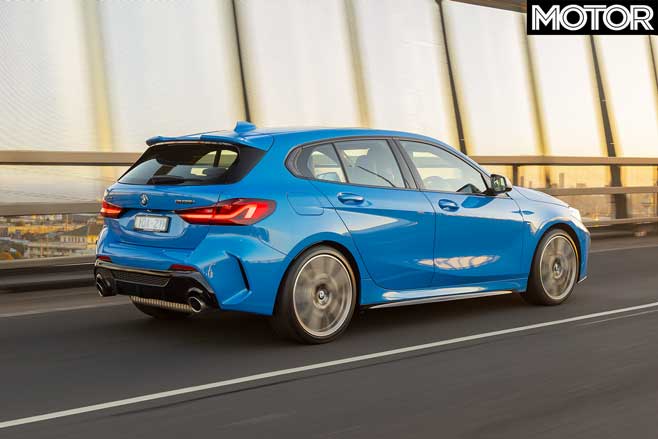
A bigger issue is the handling – it’s completely inert. It doesn’t matter what you do with the brakes, steering or throttle, the M135i steadfastly refuses to do anything but understeer at the limit. It’s reasonably quick, sure, and safe, but ultimately unsatisfying. This nose-led balance is evident in the heavy toll paid by the front tyres, which quickly show significant wear after sustained enthusiastic driving (15-20 minutes or so). But worst of all is the steering: it’s overly heavy, syrupy in feel, lacking communication and somehow corrupted under power (isn’t this thing all-wheel drive?). It’s a poor showing.
There is hope. The aforementioned $1900 M Performance Package drops the wheels to 18s (and adds some black exterior garnish) and allows the fitment of adaptive dampers – a snip at $400. That should alleviate the ride concerns at the very least. If it can help the handling and steering, even better.
The M135i isn’t a bad car; it’s quick, practical and looks good – much better in the metal than in pictures. Trouble is, it’s not a good one either. Forget filling the M140i’s shoes, in almost every area BMW’s new hot hatch fails to trouble VW’s seven-year-old Golf R. That is a tough situation.

2020 BMW M135i xDRIVE SPECS Engine: 1998cc inline-4cyl, DOHC, 16v, turbo Power: 225kW @ 4500-6250rpm Torque: 450Nm @ 1750-5000rpm Weight: 1525kg 0-100km/h: 4.8sec (claimed) Price: $64,990
Likes: Punchy engine; equipment levels; good looks; reasonably quick Dislikes: Awful steering; jittery ride; inert chassis; local specification
Rating: 3 out of 5 stars


